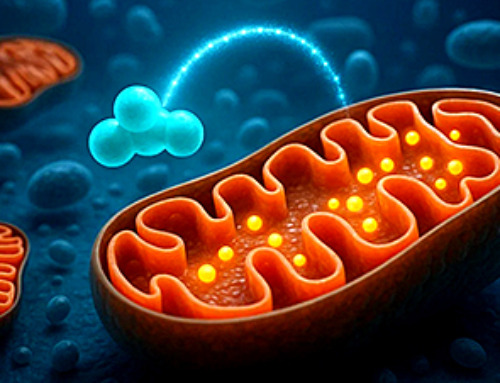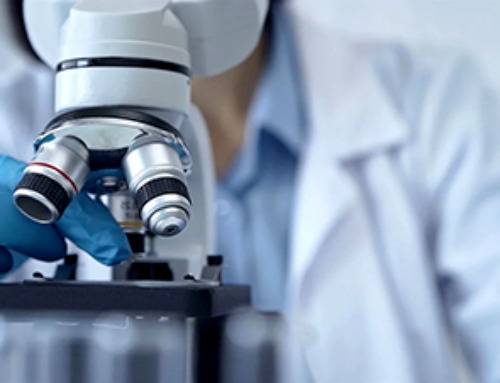In a study published July 29 in Advanced Materials, University of Texas at Dallas researchers found that X-rays of the kidneys using gold nanoparticles as a contrast agent might be more accurate in detecting kidney disease than standard laboratory blood tests. Based on their study in mice, they also found that caution may be warranted in employing renal-clearable nanomedicines to patients with compromised kidneys.
Before administering renal-clearable drugs, doctors routinely check a patient’s kidney function by testing their blood urea nitrogen (BUN) and creatinine (Cr) levels. With the increasing use of engineered nanoparticles to deliver payloads of drugs or imaging agents to the body, an important question is how the nanoparticles’ movement and elimination through the kidney is affected by kidney damage. Can traditional biomarkers like BUN and Cr accurately predict how well—or how poorly—such nanoparticles will move through the kidneys?
The UT Dallas researchers found that in mice with severely injured kidneys caused by the drug cisplatin, in which BUN and Cr levels were 10 times normal, nanoparticle transport through the kidneys was slowed down significantly, a situation that caused the nanoparticles to stay in the kidneys longer.
In mildly injured kidneys, however, in which BUN and Cr levels were only four to five times higher than normal, the transport and retention of gold nanoparticles couldn’t be predicted by those tests.
On the other hand, the amount of gold nanoparticle accumulation seen on X-rays did correlate strongly with the degree of kidney damage.
“While our findings emphasize the need for caution when using these advanced treatments in patients with compromised kidneys, they also highlight the potential of gold nanoparticles as a noninvasive way to assess kidney injuries using X-ray imaging or other techniques that correlate with gold accumulation in the kidneys,” said Dr. Mengxiao Yu, a corresponding author of the study and a research associate professor of chemistry and biochemistry in the School of Natural Sciences and Mathematics.
Chemistry and biochemistry research scientist Xuhui Ning BS’14, Ph.D.’19 is lead author of the study, and Dr. Jie Zheng, professor of chemistry and biochemistry and a Distinguished Chair in Natural Sciences and Mathematics, is a corresponding author. Other contributors are affiliated with UT Southwestern Medical Center and Vanderbilt University Medical Center.
More information: Xuhui Ning et al, Gold Nanoparticle Transport in the Injured Kidneys with Elevated Renal Function Biomarkers, Advanced Materials (2024). DOI: 10.1002/adma.202402479
Journal information: Advanced Materials
Provided by University of Texas at Dallas
News
Breakthrough Drug Restores Vision: Researchers Successfully Reverse Retinal Damage
Blocking the PROX1 protein allowed KAIST researchers to regenerate damaged retinas and restore vision in mice. Vision is one of the most important human senses, yet more than 300 million people around the world are at [...]
Differentiating cancerous and healthy cells through motion analysis
Researchers from Tokyo Metropolitan University have found that the motion of unlabeled cells can be used to tell whether they are cancerous or healthy. They observed malignant fibrosarcoma cells and [...]
This Tiny Cellular Gate Could Be the Key to Curing Cancer – And Regrowing Hair
After more than five decades of mystery, scientists have finally unveiled the detailed structure and function of a long-theorized molecular machine in our mitochondria — the mitochondrial pyruvate carrier. This microscopic gatekeeper controls how [...]
Unlocking Vision’s Secrets: Researchers Reveal 3D Structure of Key Eye Protein
Researchers have uncovered the 3D structure of RBP3, a key protein in vision, revealing how it transports retinoids and fatty acids and how its dysfunction may lead to retinal diseases. Proteins play a critical [...]
5 Key Facts About Nanoplastics and How They Affect the Human Body
Nanoplastics are typically defined as plastic particles smaller than 1000 nanometers. These particles are increasingly being detected in human tissues: they can bypass biological barriers, accumulate in organs, and may influence health in ways [...]
Measles Is Back: Doctors Warn of Dangerous Surge Across the U.S.
Parents are encouraged to contact their pediatrician if their child has been exposed to measles or is showing symptoms. Pediatric infectious disease experts are emphasizing the critical importance of measles vaccination, as the highly [...]
AI at the Speed of Light: How Silicon Photonics Are Reinventing Hardware
A cutting-edge AI acceleration platform powered by light rather than electricity could revolutionize how AI is trained and deployed. Using photonic integrated circuits made from advanced III-V semiconductors, researchers have developed a system that vastly [...]
A Grain of Brain, 523 Million Synapses, Most Complicated Neuroscience Experiment Ever Attempted
A team of over 150 scientists has achieved what once seemed impossible: a complete wiring and activity map of a tiny section of a mammalian brain. This feat, part of the MICrONS Project, rivals [...]
The Secret “Radar” Bacteria Use To Outsmart Their Enemies
A chemical radar allows bacteria to sense and eliminate predators. Investigating how microorganisms communicate deepens our understanding of the complex ecological interactions that shape our environment is an area of key focus for the [...]
Psychologists explore ethical issues associated with human-AI relationships
It's becoming increasingly commonplace for people to develop intimate, long-term relationships with artificial intelligence (AI) technologies. At their extreme, people have "married" their AI companions in non-legally binding ceremonies, and at least two people [...]
When You Lose Weight, Where Does It Actually Go?
Most health professionals lack a clear understanding of how body fat is lost, often subscribing to misconceptions like fat converting to energy or muscle. The truth is, fat is actually broken down into carbon [...]
How Everyday Plastics Quietly Turn Into DNA-Damaging Nanoparticles
The same unique structure that makes plastic so versatile also makes it susceptible to breaking down into harmful micro- and nanoscale particles. The world is saturated with trillions of microscopic and nanoscopic plastic particles, some smaller [...]
AI Outperforms Physicians in Real-World Urgent Care Decisions, Study Finds
The study, conducted at the virtual urgent care clinic Cedars-Sinai Connect in LA, compared recommendations given in about 500 visits of adult patients with relatively common symptoms – respiratory, urinary, eye, vaginal and dental. [...]
Challenging the Big Bang: A Multi-Singularity Origin for the Universe
In a study published in the journal Classical and Quantum Gravity, Dr. Richard Lieu, a physics professor at The University of Alabama in Huntsville (UAH), which is a part of The University of Alabama System, suggests that [...]
New drug restores vision by regenerating retinal nerves
Vision is one of the most crucial human senses, yet over 300 million people worldwide are at risk of vision loss due to various retinal diseases. While recent advancements in retinal disease treatments have [...]
Shingles vaccine cuts dementia risk by 20%, new study shows
A shingles shot may do more than prevent rash — it could help shield the aging brain from dementia, according to a landmark study using real-world data from the UK. A routine vaccine could [...]





















